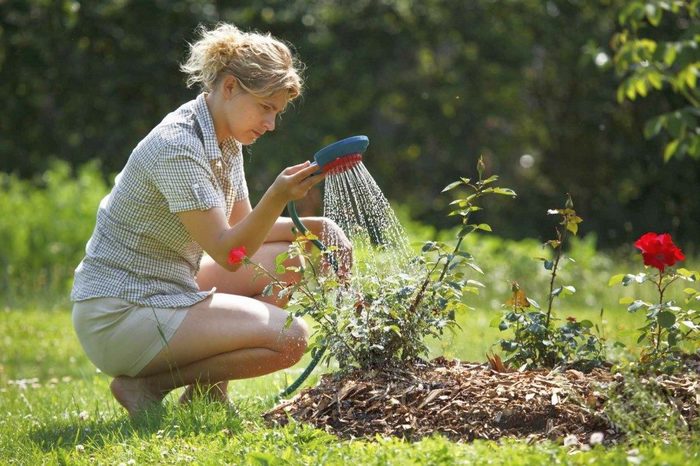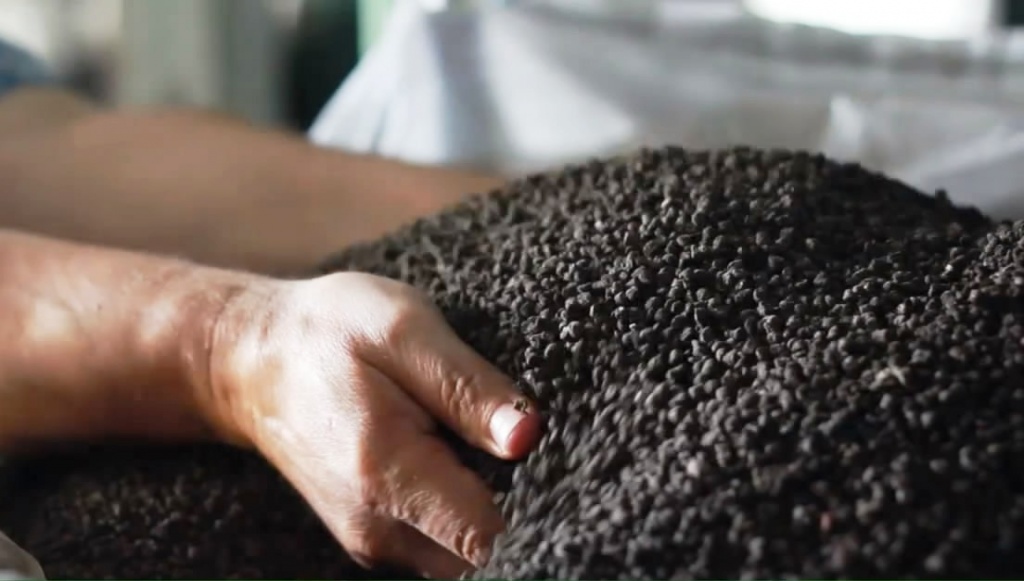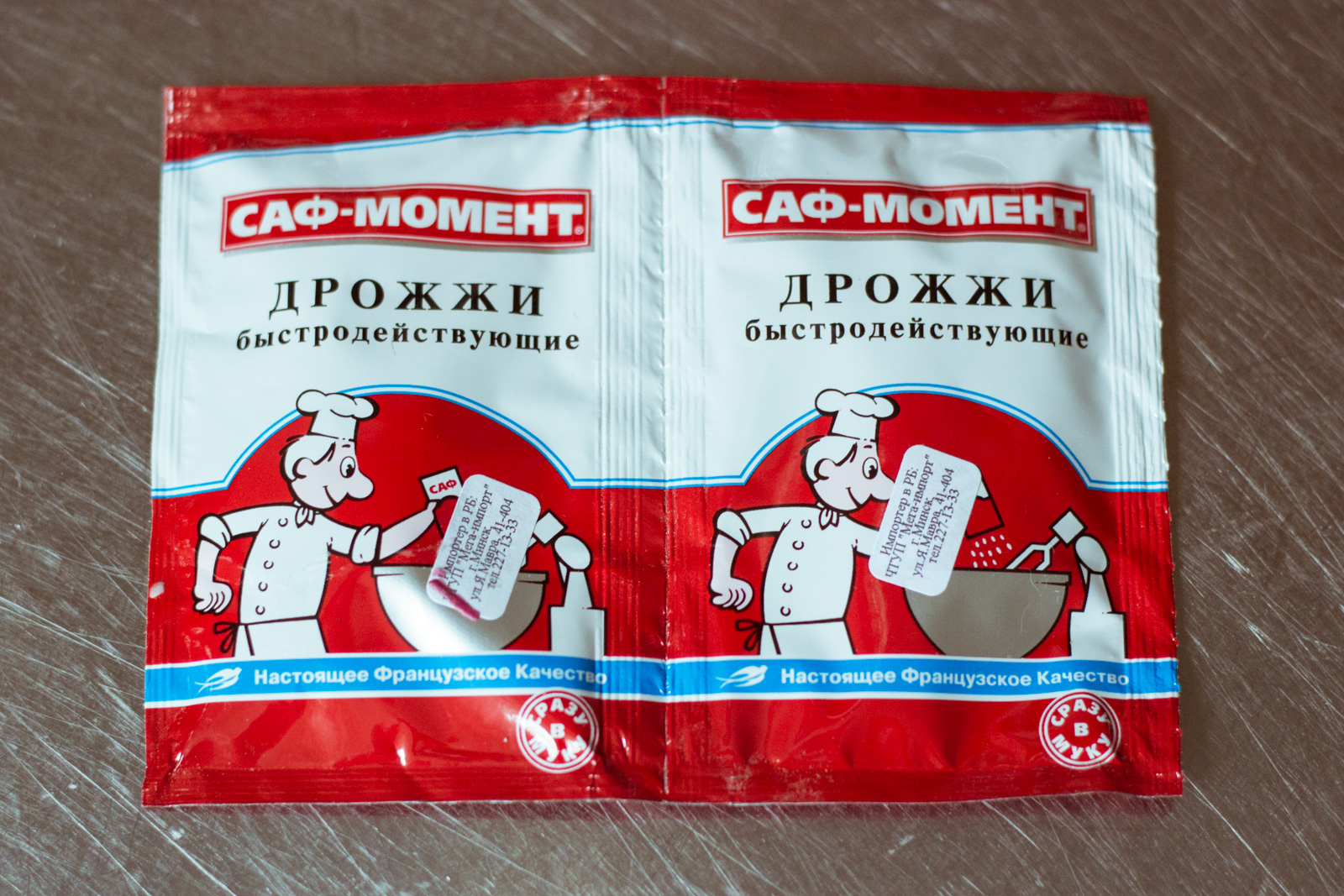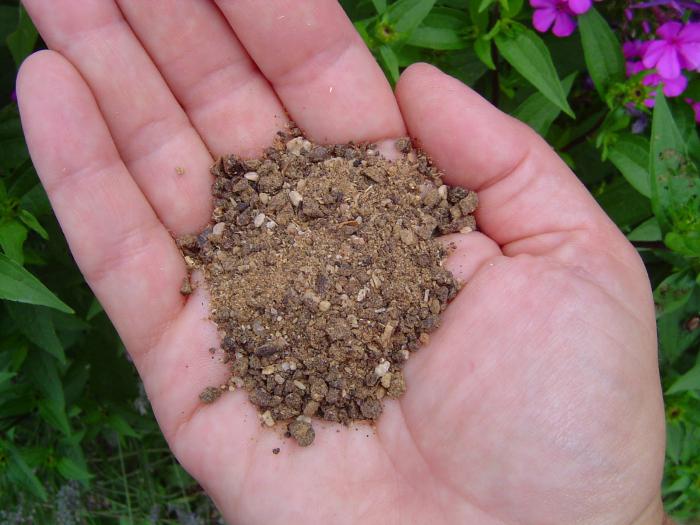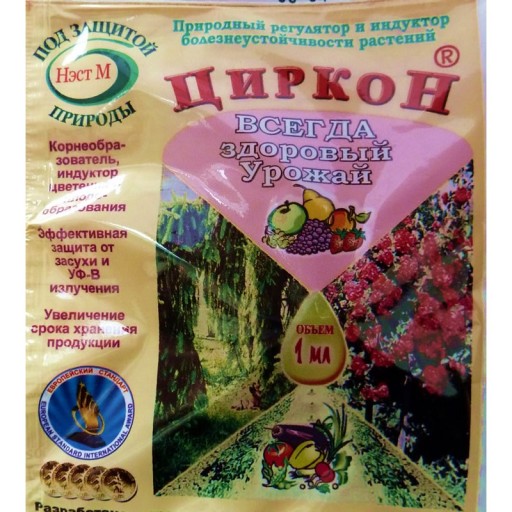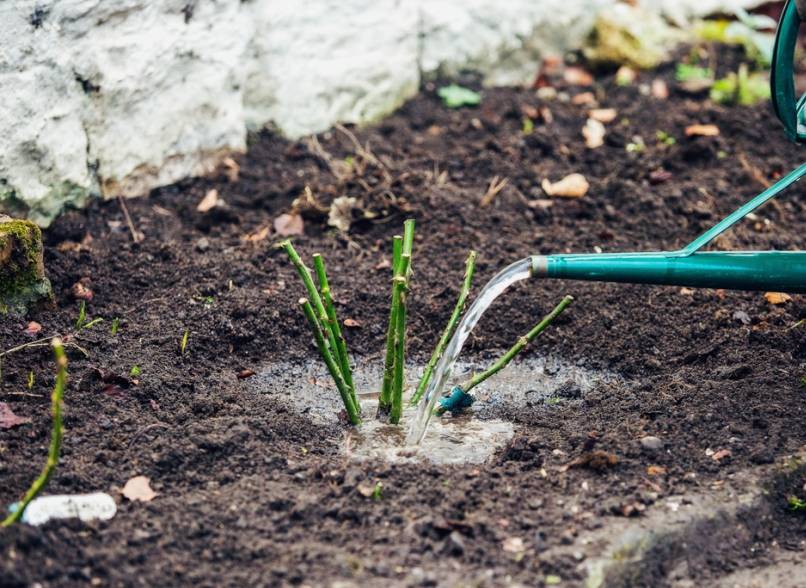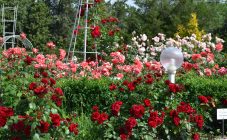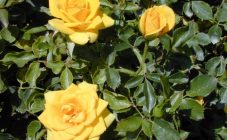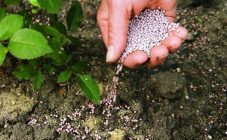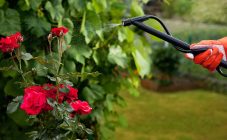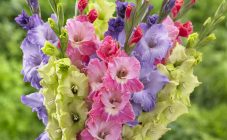Content:
A special attitude has been formed towards roses - they are used to decorate rooms for celebrations, they are presented for anniversaries and weddings, and are used in landscape design. Several varieties can be grown in a rose garden laid out in a garden plot, however, it is impossible to get a long and abundant flowering and healthy bushes if you do not know how to feed the roses.
General rules for caring for a rose in the garden
There is an opinion that roses are a capricious flower that requires a lot of work to care for. Those who have hundreds of bushes say that caring for them is simple and very pleasant.
Planting roses
Taking care of a flower begins with planting it. A place is prepared for a rose bush by digging up the ground and removing the roots and stems of plants. The soil is mixed with fertilizer, pits are prepared at a distance of 0.5 m so that the root system can freely fit in them. Weak shoots are removed from the bush, and strong shoots are cut off, leaving 5-8 buds each, and lowered into the hole. The seedling is sprinkled with earth and watered so that the soil fills the voids. After planting, the plant is properly cared for with watering and fertilizing, loosening the earth.
Container roses are planted in May and during the summer, including August. Root - in the fall, giving the plant time to take root before frost.
Pruning
Pruning is performed by seasons:
- in spring to stimulate the plant to grow and bloom profusely;
- in the fall, preparing the bush for wintering and wrapping;
- in summer, dry stems and faded buds are removed.
Watering
After planting, roses are watered every 2 days, gradually going to weekly watering. In summer it is watered abundantly a month 2 times, in a hot and dry period - more often. From late summer - early September, watering is reduced.
Before sheltering for the winter, rose bushes are watered abundantly and stop moistening the ground so that the roses overwinter in dry soil.
Winter shelter
For the wintering of roses, a dense, complexly designed shelter is being built. With the arrival of spring, starting in April, fresh air is admitted into it, raising its edge for a day. After a week, if the temperature is not lower than -5 ° C, the top layer of non-woven material is removed from the cover. After another 3 days, the spruce legs are removed. When a stable positive temperature is established, foliage is swept away from the shelter.
After the rose bushes have adapted to the new conditions, the hillock is removed (the condition for this is that the ambient temperature is not lower than +7 ° C). Pruning is done and top dressing is applied at least a week later.
Why and how to feed roses
In the life of a flower are important:
- potassium and phosphorus, affecting peduncles and their quantity;
- magnesium, which takes part in coloring the petals and gives them a bright color;
- nitrogen, "responsible" for the development of the bush and a set of green mass;
- iron, which increases resistance to chlorosis.
The flower requires magnesium, boron, manganese (the deficiency is made up by spraying with a weak solution of potassium permanganate), and other chemical elements. At each stage of development, he needs more or less of certain trace elements and nutrients. So, in the springtime, when the plant has just woken up after winter dormancy, a large amount of nitrogen is needed for foliage. The last dressings of the season do not contain nitrogen, so that the plant can more easily endure the winter weather.
When the buds are laid and the flowering period begins, potassium and phosphorus should be in large quantities in the nutrient mixtures. Growers produce a variety of fertilizers for roses for abundant flowering. The owners of flower beds, along with mineral fertilizers, also use organic matter.
Feeding methods
There are several fertilization techniques. Fertilizing roses can be root, when the nutrient mixture is poured separately or during watering under the bush. For foliar feeding, the plant is sprayed on the leaf. The plant quickly assimilates the received nutrition, and the substances included in the composition do not in any way affect the state of the soil.
There is another effective technique designed for the gradual assimilation of nutrients by the plant. With this method, a shallow groove is made around the rose bush at a distance of 15 cm from the main stem. It is filled with a nutrient compound mixed with soil and sprinkled with earth. Fertilizer is also scattered under the bush before loosening or digging up the earth. So the soil is fertilized with Gloria granules for roses (manufacturer Fasko, Russia).
Top dressing with mineral fertilizers
Spring is the time for new stems to grow and cover them with young leaves. The plant needs nitrogen at this time, and it receives it with ammonium nitrate. Saltpeter is added immediately after the snow melts. When fertilizing the soil with it, a proportion of 20 g per 10 liters of water is used.
In late spring and early summer, fertilizers are applied for abundant flowering. How to feed roses during this period so that the bush is good? Potash-phosphorus fertilizers. Top dressing is done with a composition prepared by dissolving 10 g of superphosphate and 10 g of potassium sulfate in 10 liters of water. This fertilizer is recommended to be applied in June. In July, top dressing is prepared by adding chicken droppings (0.5 kg) and nitrophoska (10 g) to the previous composition.
In June, it is advised to add wood ash to normalize the acidity of the soil.
Fertilizer for roses with ash for root feeding should be done by mixing 10 liters of water and 100 g of ash. A solution with ash for roses for spraying on a leaf is prepared using 200 g of ash per 10 liters of water.
In order for the cold winter to pass painlessly for the plant, it is fed with fertilizers, which contain phosphorus and potassium (sulfate, potassium monophosphate, potassium chloride can become a source of these substances).
A comfortable wintering is prepared in the autumn by adding a solution prepared from a mixture:
- potassium monophosphate - 16 g;
- superphosphate - 15 g;
- 10 liters of water.
An alternative composition is a nutritional mixture obtained by dissolving 1 tbsp. l. superphosphate and 1 tbsp. l. potassium sulfate in 10 liters of water. Up to 4 liters of solution are poured under each bush.
Or you can add yeast top dressing:
- dry yeast (10 g) and 2 tbsp. l. stir sugar in 10 liters of heated water;
- insist 2 hours.
You need to water with a less concentrated solution, diluting the composition with 50 liters of water.
Among the regular dressings before and after flowering, there is one with the use of potassium humate. Humate is poured into 3 liters of hot water and left to infuse for 8-10 hours. Before spraying, 250 ml of the resulting infusion is diluted with 5 liters of water.
Lack of phosphorus
Phosphorus deficiency results in poor root development, resulting in a lack of nutrients for the development of a bush, leaves and inflorescences. With a phosphorus deficiency, a rose bush takes on a bad appearance - the stems become thin and curved, the leaves acquire an unhealthy dullness and become stained.Superphosphate for roses compensates for the phosphorus deficiency (on the basis of superphosphate, double superphosphate, triple, enriched and other superphosphates are produced).
Thanks to fertilization, the abundance of flowering is restored, and the plant's resistance to climatic manifestations increases. Therefore, in preparation for winter (in September), fertilizing with phosphorus is introduced. But overdose is possible.
Overdose
Excess phosphorus when applying superphosphate, like an overdose of any fertilizer, leads to wilting of the plant: the leaves turn yellow and fall off, dry spots appear on them. Suppression of growth and development of rose bushes is also observed. Due to the excessive application of nutrient mixtures, insoluble compounds are formed in the soil, and the soil is clogged with toxins.
Situations with an overdose of fertilizers can be avoided if, when applying fertilizing, use the instructions and carefully monitor the condition of the flowers.
If an overdose has occurred, then in order to save the plant, it must either be transplanted or the soil must be replaced in the place where it grows.
Ready-made complex fertilizers for roses
The advantage of ready-made complex fertilizers is their high concentration (instructions are attached to the fertilizers, indicating how to dilute with water, what concentration and how much to use), balanced composition. The result of their application is a lush bush and abundant flowering. Complex compounds are also used in order to make the bush bloom for a long time, all season.
What of the ready-made compositions to fertilize roses? Before budding, top dressing is done on the leaf with Zircon, for a lush color, the plant is fed 2 times a month with Pocon, for abundant and long flowering all season with an interval of 2 weeks, the flower is fed with a Fertile Watering Can for roses. The Internet is replete with positive reviews of Bona Forte liquid concentrated fertilizer for faster and lush flowering. Organic mineral fertilizer Omu is applied during the growing season.
Complex fertilizer 3 in 1
Kalimagnesia is used for roses from spring to autumn, when, due to a lack of sulfur and magnesium, the leaves turn yellow and red necrotic spots appear, and potassium deficiency affects rare flowering, chopping flowers, drying out the leaves. Potassium sulfate and magnesium sulfate are a part of potassium magnesium, and fertilization increases the content of potassium, magnesium and sulfur in the soil.
Organic
Thanks to the introduction of organic fertilizers, the fertility of the soil increases, the shoots of weeds are reduced, and useful worms that loosen the soil are attracted. How to feed organic roses so that the garden with a rose garden will delight the whole season, and the flower is large?
In the fall, during mulching, compost and peat can be decomposed along a circular groove around the bush - such nutrition will give strength to the root system to grow. Rose bushes can be fed during early spring - all the time of flowering with chicken manure. In order not to overdo it with fertilizing, fresh manure is diluted with water in a ratio of 1:20 (for rotted manure, water is taken 2 times less). The composition is insisted for 5 days, before adding water is added in a ratio of 1: 3.
Mullein is diluted with water in a ratio of 1:10 and left for 7 days in a warm place to infuse. Before feeding, add water in a 1: 2 ratio.
How else to fertilize organic roses? Herbal infusion. Weeds, nettles, plant tops are used. A ¾ bucket is filled with grass, soda, a common food product, is added there. The composition is left for a while to ferment the contents.
The soil under the roses can be fertilized with bone meal. Its rich calcium composition allows flour to be applied in spring, summer and autumn without fear of overdose.Fertilized with flour and to prevent phosphorus deficiency in roses, normalize the level of soil acidity.
Other recipes
To help the plant recover after wintering, they are feeding the roses with vodka. The bush is watered with the following composition:
- vodka - 100 g;
- 3 liters of water.
Iodine is used as a fertilizer to suppress harmful microorganisms. The medicine is used for watering in micro doses - a couple of drops on a bucket of water. When rose bushes are infected with powdery mildew, they are sprayed with a solution of calcium soda. It is prepared by diluting 50 g of soda ash and 40 g of laundry soap in a bucket of water. As the prevention of fungal infections, such treatments are carried out 1-2 times per summer.
Prevention of pests and diseases is carried out using copper sulfate for roses in summer. The solution is prepared by adding copper sulfate (100-150 g) to 10 liters of water.
For the rose garden to become a place of relaxation and pleasure derived from the delicate aroma of flowers and the beauty of flowers, you need to work hard. The introduction of mineral and organic fertilizers is the main component of proper care, without top dressing rose bushes will become more vulnerable to various diseases and pests, and will not be able to bloom luxuriantly and for a long time.

